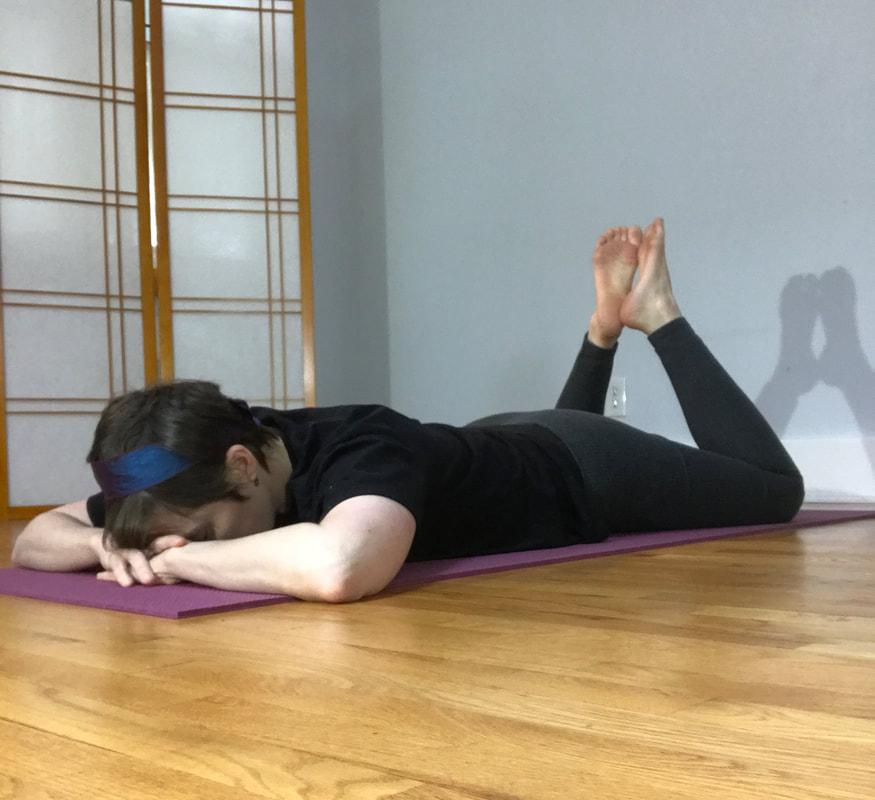|
Find this lesson here: On the belly, twisting movements to free the head and neck | Heather (Danso) Emanuel GCFP on Patreon
A lesson of movements lying on the abdomen (mostly) letting legs fall right and left, while softly letting go of usual co-contraction along the spine, in the ribs, and in the whole self. When you practice using movement to help lower your habitual level of tension, you find an alternative way of holding yourself, better breathing, easier carriage of the head over your shoulders, and also greater freedom in your shoulder blades. What this means is you'll have more room to feel more like yourself.
0 Comments
This is a blended lesson that can help to unwind scoliosis, change the relationship of the head, spine, thorax, and pelvis. Some of the movements are offer particular insights for the thoracic spine, this area where the relationship of ribs, spine, organs, diaphragm, and the way we orient our head forward (like for computer use, or even simple daily use of the eyes) often leads to stiffness and even difficulty breathing. See what you notice as you stand at the end. Is your head on a little differently? Do you sense your breathing more easily and simply? How free are you in your chest, neck and head? How can you carry some of these changes into your daily life?
Free on my patreon for the next month www.patreon.com/posts/towards-longer-79644844 This can be one of those lessons where you try something, take a break, try it again, take a break. Remember to decrease the amount of effort as you become comfortable/oriented to a movement. One of the signs of using a lot of effort is your breathing (or lack there-of). Another sign might be using your upper body to lift your pelvis, or pinning your head in the center during rolling movements. Remember, the movements are here for you to learn about yourself: in themselves, the movements aren't the point. So more/larger isn't better. Small, and clear is more helpful. Feel what you do. Feel the trajectory of movement. Listen for ease in your breath, hands, jaw, and eyes as you go.
Available on Patreon patreon.com/heatherdanso For this lesson, you'll need wingspan (room to reach your arms. Only the audio lesson will be available on the blog. I'll upload some photos/videos of the movements so that you can see an idea of what you'll be doing. However, if you don't have the video, then you'll have the opportunity to become confused, which is not a bad thing! "If you are not confused, you are not learning". Find some length in your neck, and where did that come from? Must be something about the ribs, as the movements we did today seemingly target the shoulders, but truthfully, the constraint is something more: What needs to move to make this easy? Where can I soften? How do I use my whole self?
Today's lesson is a balancing of the muscles that fold us, and the muscles that hold us up - in other words, we are organizing, discerning, and coordinating the muscles along the spine. That being said, many things happen: the diaphragm is addressed in relation to folding and twisting. In twisting, there are elements of side bending, of curling, and of backbending, so it is a lovely way to actually lower the unnecessary work along the spine.
Did you feel taller? Did your head feel on differently? Did you find more freedom in your thoracic spine and did that impact your ability to twist and to roll your head? This lesson is now on Patreon
An exploration based on the Alexander Yanai Awareness Through Movement Lesson 179. How does your breath impact your movement? How does your movement teach you new possibilities?
We begin already lying on the floor. Curious? Review how to do an ATM before you try one!
The scan in the beginning is in standing! Go easy. Do less. Feel more. Pay attention to how you do what you do, and only do what feels gloriously available, and delicious. This video below is an approximation of the lesson, as a reminder, but not as a determination of what you will do. Sometimes when doing a lesson, you would not even know I am moving. The beginning of the movement is enough. The intention is enough. Then, see how you change! Be sure to do a scanning process on your back as you begin. |
HOW-TORecorded at public classes, All audio classes are now on Patreon. Please read the HOW-TO before doing a lesson. Archives
April 2024
Categories
All
|
||||||||||||||||
Heather Emanuel, GCFPSchedule Appointment
|
|


 RSS Feed
RSS Feed